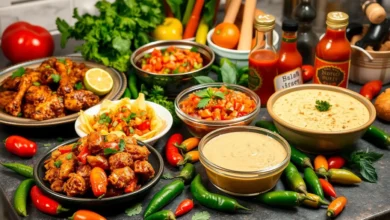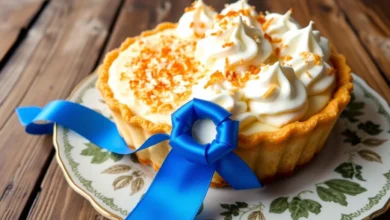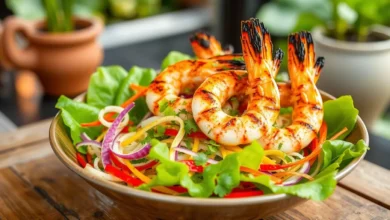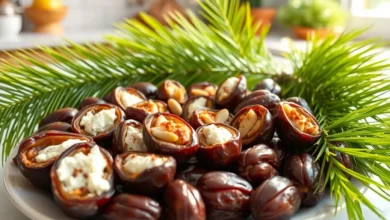does salad come before appetizers
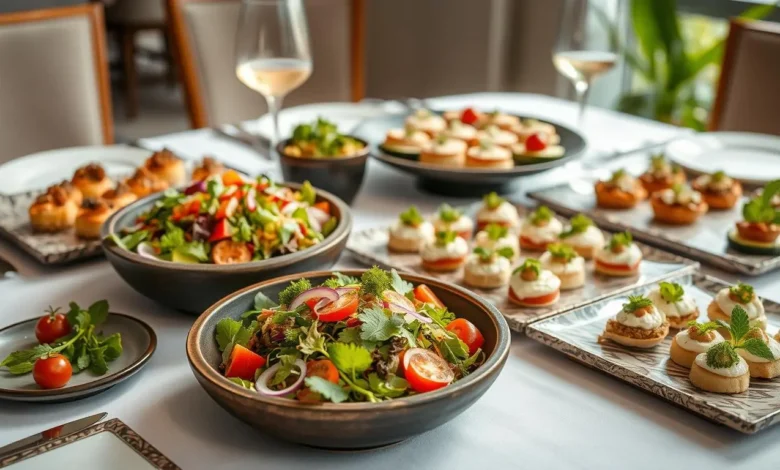
does salad come before appetizers When we sit down to eat, the order of our meal matters a lot. Many wonder if salad should come before or after appetizers. Let’s dive into the traditional order, the roles of salads and appetizers, and the ongoing debate about their place in a meal.

A beautifully arranged dining table showcasing a vibrant salad in a rustic bowl, surrounded by an assortment of elegant appetizers on decorative platters, soft natural lighting illuminating the scene, with fresh ingredients and colorful garnishes enhancing the visual appeal.
Key Takeaways
- The traditional course order typically places salad before appetizers.
- Salads are often served as a refreshing start to a meal, while appetizers are meant to whet the appetite.
- Regional and cultural variations can influence the order of courses.
- Proper meal progression is important for creating a balanced and enjoyable dining experience.
- The debate over salad vs. appetizers continues, with valid arguments on both sides.
Understanding the Traditional Course Order
The traditional course order for a formal meal is: aperitif, amuse-bouche, appetizer, salad, main course, palate cleanser, and dessert. This order is meant to get your appetite going, clean your palate, and make sure you enjoy your meal.
The Significance of Proper Meal Progression
Ordering courses is key to a great dining experience. Each dish is chosen to prepare your palate for the next. This way, flavors build and complement each other. It keeps your taste buds happy and fulfilled.
Regional and Cultural Variations
But, there are regional and cultural variations in course order. Local customs and traditions shape these differences. Even though the basic structure stays the same, cultures add their own twists. Knowing these cultural variations can deepen your appreciation for different culinary traditions.
| Course | Purpose |
|---|---|
| Aperitif | Stimulate the appetite and prepare the palate for the meal |
| Amuse-bouche | Provide a small, flavorful bite to awaken the senses |
| Appetizer | Introduce the meal and whet the appetite for the main course |
| Salad | Cleanse the palate and aid in digestion before the main course |
| Main Course | The centerpiece of the meal, featuring the primary dish |
| Palate Cleanser | Refresh the palate and prepare it for the final course |
| Dessert | Provide a sweet and satisfying conclusion to the meal |

does salad come before appetizers A beautifully arranged dining table showcasing a traditional course order, featuring a vibrant salad in an elegant bowl, followed by an assortment of appetizers artfully displayed on a platter, surrounded by fine dining utensils and soft candlelight ambiance, with a blurred background of a cozy restaurant setting.
“The order of courses in a formal meal is not just a matter of etiquette, but a carefully crafted culinary experience designed to enhance the flavors and textures of each dish.”
The Role of Salads in a Meal
Salads are key in a meal’s flow. They bridge the gap between the light appetizer and the hearty main dish. They refresh and clean the palate, getting it ready for the next flavors.
Salads also highlight the season’s best ingredients. They introduce flavors that match the meal’s theme. This way, they set the stage for the dining experience, hinting at what’s to come.
Eating a salad can also affect how we feel. The crunch and tang of greens and dressings wake up our senses. They kickstart digestion, making us ready for the meal’s main courses. This smooth transition makes the meal balanced and enjoyable.
| Role of Salads in a Meal | Impact on the Dining Experience |
|---|---|
| Transition between appetizer and main course | Refreshes the palate and prepares the body for the main dish |
| Showcase seasonal and locally-sourced ingredients | Sets the tone for the overall culinary journey |
| Stimulate the senses with crunch and acidity | Triggers the digestive process and enhances the overall meal |
In short, salads do more than just add nutrition to a meal. They link the meal’s courses, creating a unified and delightful experience. They excite our senses and prepare us for the meal’s highlight.

A visually appealing dining table set for a meal, featuring a vibrant salad centered amongst various appetizers, colorful fresh vegetables, herbs, and seasonal fruits arranged artfully; soft natural lighting highlighting the textures and colors of the food, creating an inviting atmosphere.
Appetizers: The Delightful Prelude
Appetizers, also known as hors d’oeuvres, are the tasty starters that kick off a great meal. These small treats get your taste buds ready for more. They offer a sneak peek of what’s to come, from savory bites to creative small plates.
Types of Appetizers and Their Purpose
Appetizers come in many forms, each with its own role. Here are a few:
- Canapés: Small, open-faced sandwiches or bites that often feature a savory topping on a crisp base.
- Finger Foods: Easily portable and bite-sized appetizers that can be enjoyed with the hands, such as skewers, mini quiches, or stuffed mushrooms.
- Small Plates: Slightly larger than canapés, these appetizers offer a more substantial taste of the chef’s culinary prowess, showcasing a single ingredient or flavor profile.
These appetizers aim to excite your senses and get you ready for the main course. They offer a mix of flavors, textures, and looks, building anticipation for the meal ahead.
| Appetizer Type | Purpose |
|---|---|
| Canapés | To provide a bite-sized, visually appealing introduction to the meal’s flavors. |
| Finger Foods | To offer a portable and easily consumed appetizer that can be enjoyed while mingling. |
| Small Plates | To showcase the chef’s culinary expertise and provide a more substantial taste of the upcoming meal. |
Appetizers are the exciting start to a meal, making it memorable and enjoyable.
Salad vs. Appetizers: The Great Debate
The debate on whether to serve salad before or after appetizers is big in the food world. Some say salad first to clean the palate for richer appetizers. Others think appetizers should go first to get the appetite going.
It really depends on what you like and the kind of meal you’re having. Let’s look at the main points in the salad vs. appetizers debate:
- Palate Preparation: Fans of salad first say it wakes up the taste buds for the richer appetizers.
- Appetite Stimulation: Those who prefer appetizers first say they get the appetite going for the main meal.
- Cultural Variations: Different places and food traditions have their own ways of ordering salad and appetizers. Knowing these can help understand the debate better.
| Salad First | Appetizers First |
|---|---|
| Prepares the palate for richer flavors | Stimulates the appetite for the main meal |
| Cleansing, refreshing experience | Tantalizing, indulgent introduction |
| Aligns with traditional Western dining customs | May be more common in certain regional cuisines |
Choosing between salad or appetizers first depends on what you like, the meal, and cultural traditions. Both can make the meal better, making the salad vs. appetizers order debate a fascinating topic in the food world.
Conclusion
The order of salads and appetizers can change based on many things. This includes regional traditions, personal taste, and the overall dining experience. The goal is to make a meal that is both harmonious and enjoyable, highlighting the best of both.
Whether salad comes first or after appetizers, the main thing is to enjoy the meal. Understanding the traditional order and the role of each dish can make the experience better. This way, diners can fully appreciate the flavors of both salads and appetizers.
The debate on whether salad or appetizers should come first might go on. But what’s most important is creating a balanced and enjoyable dining experience. Restaurants and home cooks can try different orders to see what works best for their guests. What matters most is the creativity and taste each course adds to the meal.
As we wrap up, it’s clear that salads and appetizers add a special touch to dining. Whether you like your salad first or after appetizers, the excitement of new flavors is key. With a curious mind and a keen sense of taste, diners can keep exploring the wonders of salads and appetizers.
FAQ
Does salad come before appetizers?
The order of salad and appetizers can change based on where you are and what you like. Traditionally, appetizers start to get your appetite going. Then, a salad cleanses your palate before the main dish. But, some think salad should go first to get ready for the appetizers’ richer tastes.
What is the purpose of appetizers?
Appetizers, or hors d’oeuvres, aim to get your appetite ready. They offer a sneak peek of the meal’s flavors. These can be small bites or small plates that show off a chef’s skills. Their goal is to make you excited for the main course.
How do salads fit into the traditional course order?
Salads act as a bridge between appetizers and the main dish. They refresh your palate, making it ready for the main course. Salads also highlight fresh ingredients and flavors that match the meal.
What are the different types of appetizers?
Appetizers come in many forms, like canapés, finger foods, small plates, and amuse-bouche. Canapés are small snacks on crackers or bread. Finger foods are easy to eat with your hands. Small plates give a bigger taste of what’s to come. Amuse-bouche are single bites that introduce the meal’s flavors.
What are the regional and cultural variations in meal progression?
The traditional order of meals can change based on where you are and your culture. Some places focus more on the order of courses. Others are more flexible. This affects where salads and appetizers fit in the meal.
